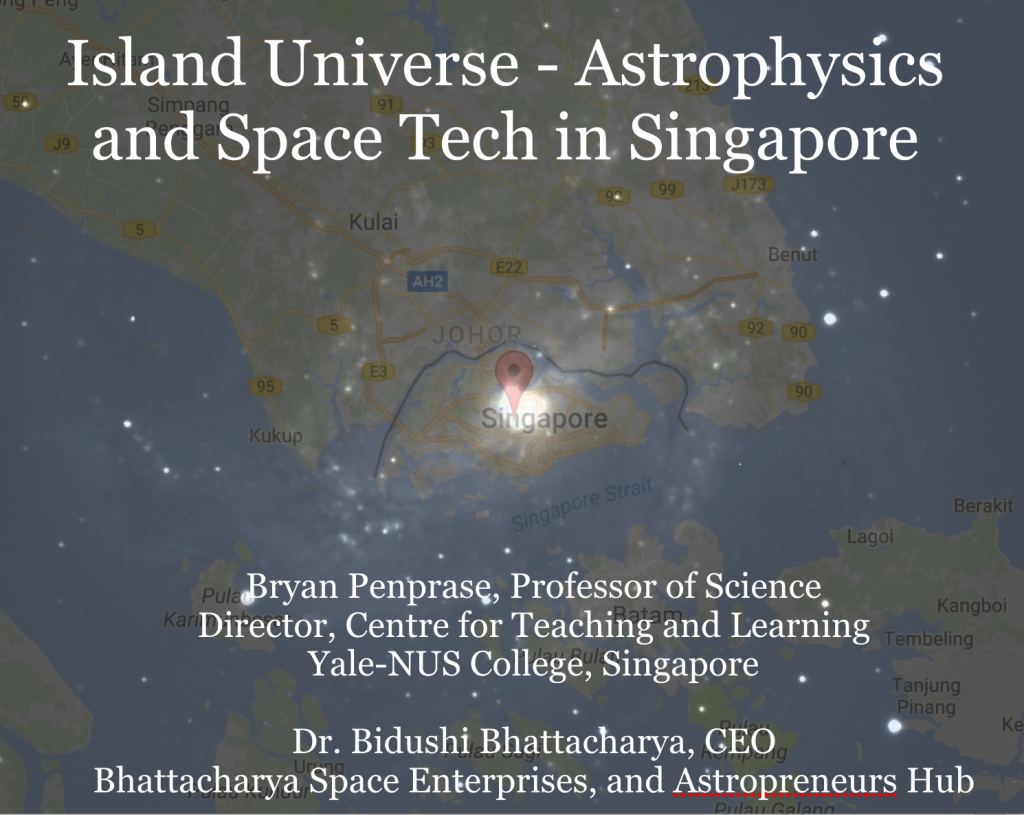
Visit to IIHS Bangalore and IUCAA Pune


During the Institute of Physics Singapore (IPS) meeting on Feb 22-24 (http://www.ipsmeeting.org/), I was invited to present a talk on “Cosmic Explosions” that related some of the discoveries from our GROWTH relay of telescopes based at Caltech. The talk included a mix of physics professors and students from across Singapore, and it was a great chance to share some of the latest astrophysics results with them. During the talk I highlighted “infant supernovae,” gravitational lensing sources, gamma ray bursts, and the discovery of gravitational waves, and how all of these sources are now possible to catch using telescopes that are optimized for discovering such “transients” and following up the discoveries with a global network of telescopes.
The audience for the talk included a number of students from Yale-NUS College, and as the meeting was hosted at Yale-NUS College, it was also a great chance to help showcase some of the modest astronomical capabilities of Yale-NUS. This includes no only our mighty 0.12-meter telescope and a pair of binoculars, but the Yale 1.3-meter telescope at CTIO and the Carnegie Science LCRO telescope at Las Campanas Observatory, both of which we have been using in our Observational Astronomy course at Yale-NUS College.
One key takeaway from this talk for me was the astounding energy of the gravitational wave sources discovered by LIGO. Based on their reported data, 3 solar masses of black hole mass were radiated away from the merger of the two black holes within the LIGO GW150914 event, which created a huge black hole over 60 solar masses in size. The energy released by merging the 25 and 37 solar mass black hole exceeds the energy radiated by the most luminous known objects in the universe, the quasar, by a factor of a trillion! The chart of black holes merging and detected by LIGO is shown below (taken from the Caltech press release of Feb 2017), and a diagram showing the range of cosmic explosions is also shown below. Both of these figures were included in my “Chasing Cosmic Explosions” talk along with the background astrophysics of stars, supernovae, gamma ray bursts, and gravitational waves. What an amazing time we live in to have all of these discoveries to study and talk about!
During my visit to Ahmedabad, I was able to visit the visionary Vice Chancellor of IIT Gandhinagar, Sudhair Jain, and learn more about his very interesting campus and its programs. Sudhair was incredibly friendly to me – as I had just arrived without an appointment. Despite the sudden appearance, he warmly welcomed me and my colleague Alicia Contractor, and we discussed many of his new programs in detail in his office over tea.
Sudhair has implemented a wonderful “Foundation Program” for incoming IIT students. The foundation program takes students fresh from their high-pressure high schools, and helps them both unlearn the frantic test-taking mentality that is endemic with IIT admissions, and to learn more about themselves, their context within the society of India, and the larger dimensions of knowledge – including arts, culture and sports.
I first learned about this program from my friends Brian Brophy (a theatre professor from Caltech) and Srini Reddy ( a music professor at IIT Gh). They together taught in the program a couple of years ago, and had students performing music, acting, and exploring the region around the IIT Gh campus. As Srini described it, he would ask his students – “what do you think?” and “what do you feel about this?” and often would receive blank stares back. He joked that students often are under the impression that they are not supposed to think and feel – and the Foundations Program helps them do both.
The goals for the Foundations Program according to the web site include:
Sudhair described some new programs he is introducing that go beyond the Foundation program. This includes an IIT Gh Explorers Fellowship program, which gives students a small grant to visit at least “6 states in 6 weeks” – traveling inexpensively, using non-AC trains and busses to see the country of India in depth. Some of the students are able to visit many more states, and in the process they are able to become more aware of life across India to help them become more effective as leaders and as engineers. In a blog posting from Manaal Bhombal, Sudhair Jain describes the goals of the program:
“The fellowship is not just to give students a taste of adventure, it is to engulf them with ground level realities of our country.” When asked about how would it help students in their engineering career, he said, “As an engineer, students should model their innovations around simplifying the travails of the less privileged.”
To provide further experiences for students, Sudhair is also working on a program where they would live in a village for the summer – not to be “saviours” but to just live and learn with the people in the village to understand their concerns and life. This is also helpful, according to Sudhair, for developing graduates who can then take their education and give back to India and understand the human dimensions of science and technology.
I noticed that the blue skies above IIT Gandhinagar portended good astronomy, and I suggested to Sudhair that he should consider developing his astronomy capabilities at IIT Gh – a project I might be interested in helping with!